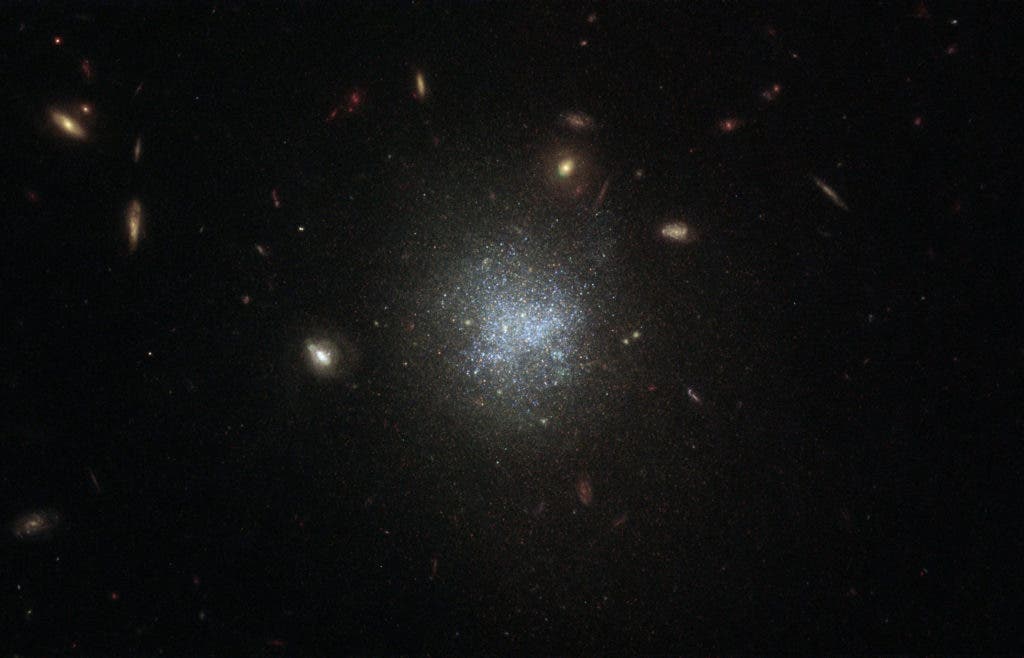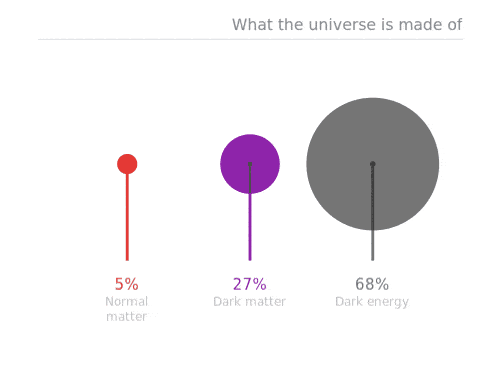
Most of the mass of the universe is invisible even to our most sensitive instruments. We have no idea what it actually looks like or what it’s made of, but this mysterious stuff must be out there. We’re sure of this because we can see its strong gravitational effect. What’s more, without it, the universe’s acceleration would have slowed down instead of accelerating as astronomers have observed.
Scientists refer to this elusive mass as dark matter and believe it outnumbers “normal” (read: visible) matter five to one. Now, a new study is proposing a candidate particle that might be part of dark matter.
What’s interesting about this particle is that researchers have already detected it in previous experiments.
Tangible dark matter?
We know more about what dark matter isn’t made of than what it is. Studies have shown that dark matter cannot be explained by baryons, antimatter, nor galaxy-sized black holes as had been proposed over the years.

In order to explain dark matter, physicists have proposed a number of candidate particles, including axions, dark photons, weakly-interacting massive particles (WIMPs), and superheavy gravitinos.
All of these candidates are hypothetical, in the sense that they haven’t been confirmed experimentally. This makes this latest study even more intriguing. It suggests that dark matter may be made of d-star hexaquark — more formally, d*(2380) — a particle that was detected in experiments in 2014.
“The origin of dark matter in the Universe is one of the biggest questions in science and one that, until now, has drawn a blank,” said Daniel Watts, a nuclear physicist at the University of York in the UK and lead author of the new study.
“Our first calculations indicate that condensates of d-stars are a feasible new candidate for dark matter. This new result is particularly exciting since it doesn’t require any concepts that are new to physics.”
Instead of being made up of sets of three quarks, like is the case for protons and neutrons, d-stars are particles made of six quarks, hence the ‘hexaquark’.
This means d-stars are bosons that can form an exotic form of matter called Bose-Einstein condensate (BEC) when chilled to almost absolute zero.
BEC, also known as the fifth state of matter, was first predicted in the 1920s by Albert Einstein and Indian physicist Satyendra Bose but it wasn’t until very late in 1995 that scientists were able to produce the necessary conditions for this extreme state of matter to occur.
At room temperature, atoms are incredibly fast and behave akin to billiard balls, bouncing off each other when they interact. As you lower the temperature (remember temperature reflects atomic agitation or vibration), atoms and molecules move slower. Eventually, once you get to about 0.000001 degrees above absolute zero, atoms become so densely packed they behave like one super atom, acting in unison.
The physicists at the University of York propose that soon after the Big Bang, conditions would have been enough for d-star hexaquarks to come together as BECs. And, according to their calculations, if the particles gathered in large enough numbers, they could have potentially caused analogous effects to dark matter.
In the future, the researchers plan on testing their hypothesis in a laboratory setting. Meanwhile, they hope astronomers can join in and search for signals that may indicate d-star BECs somewhere in the galaxy or beyond.
“The next step to establish this new dark matter candidate will be to obtain a better understanding of how the d-stars interact – when do they attract and when do they repel each other,” said Mikhail Bashkanov, co-author of the study. “We are leading new measurements to create d-stars inside an atomic nucleus and see if their properties are different to when they are in free space.”
The findings were reported in the Journal of Physics G: Nuclear and Particle Physics.









